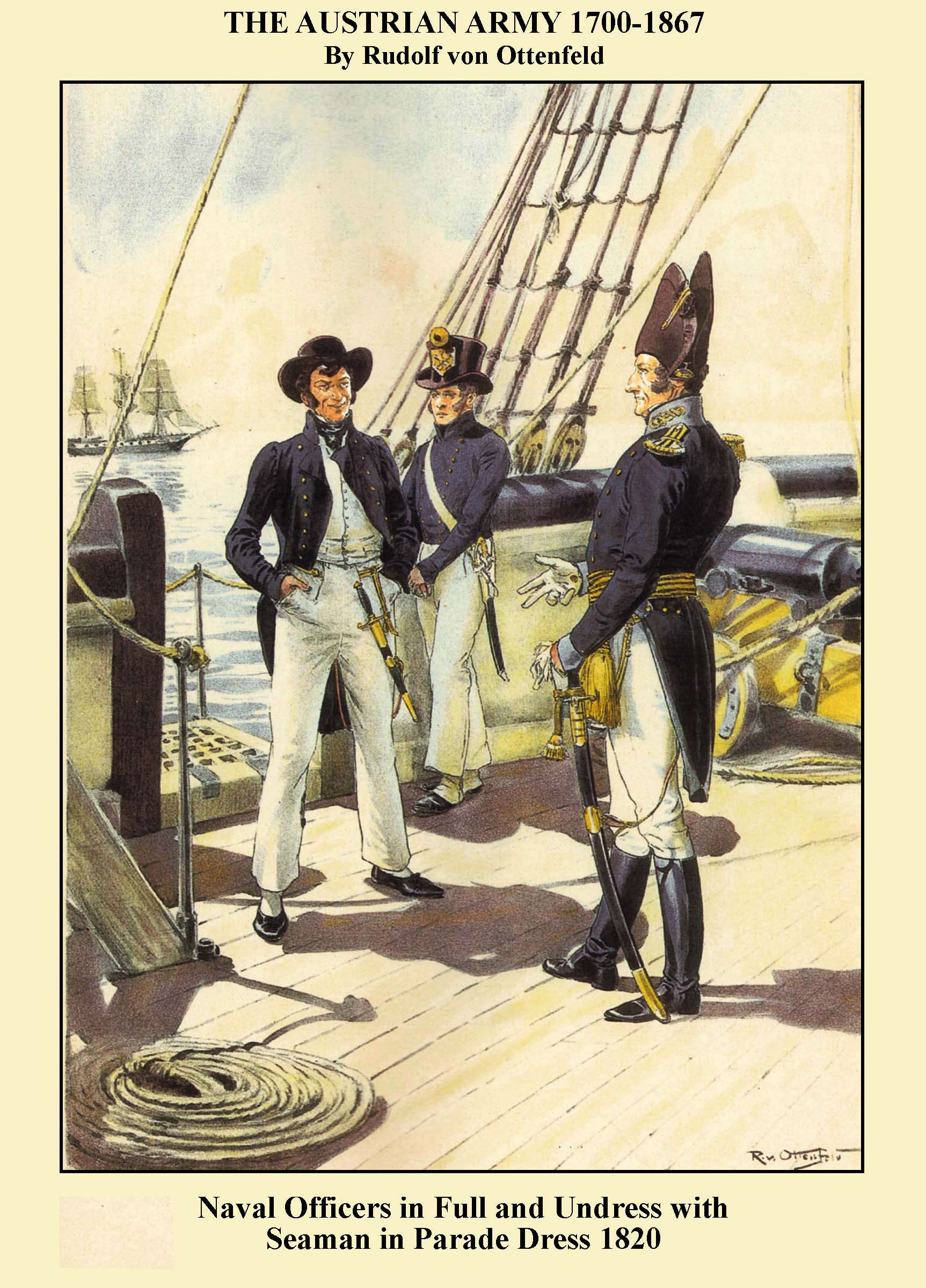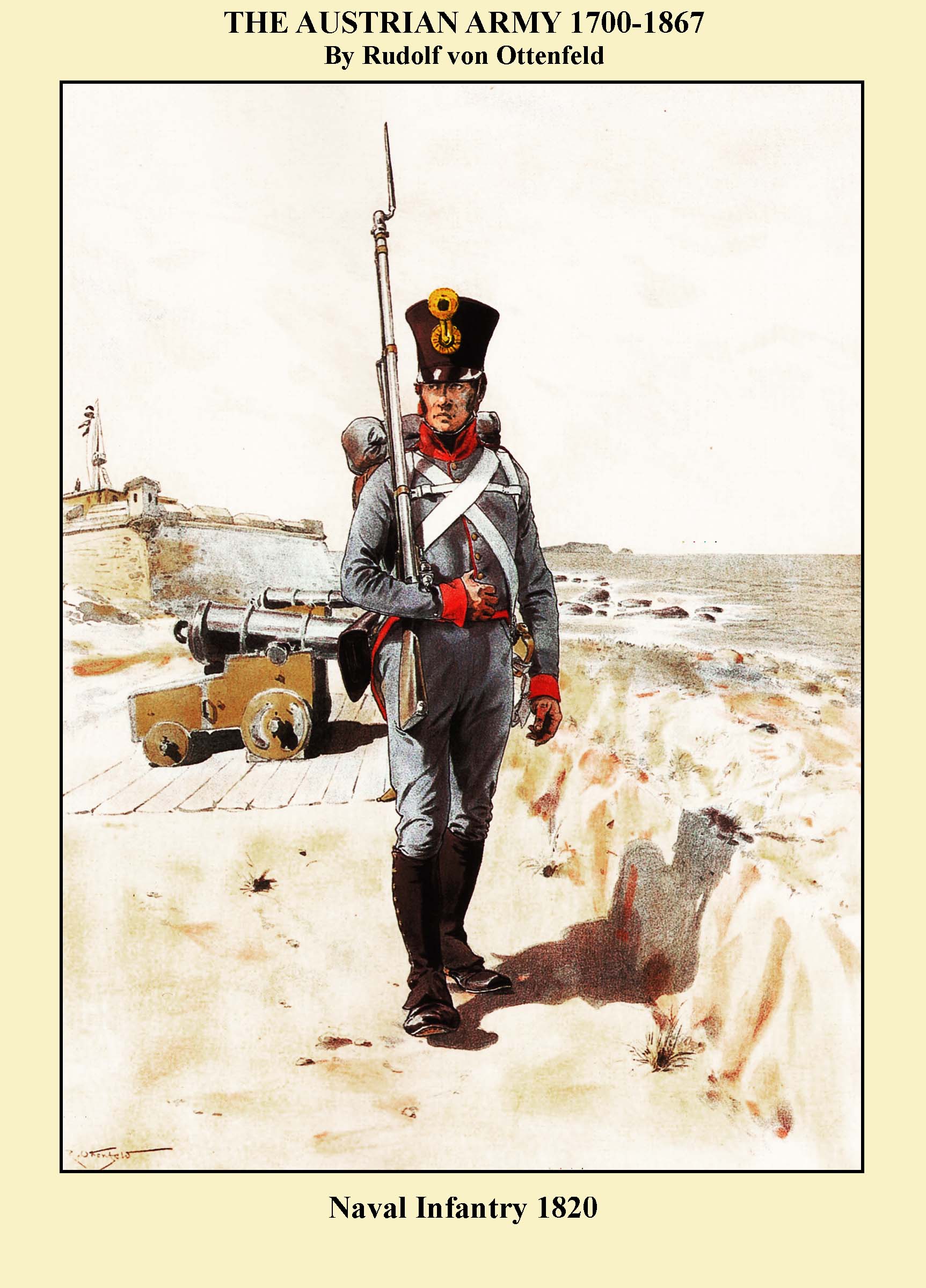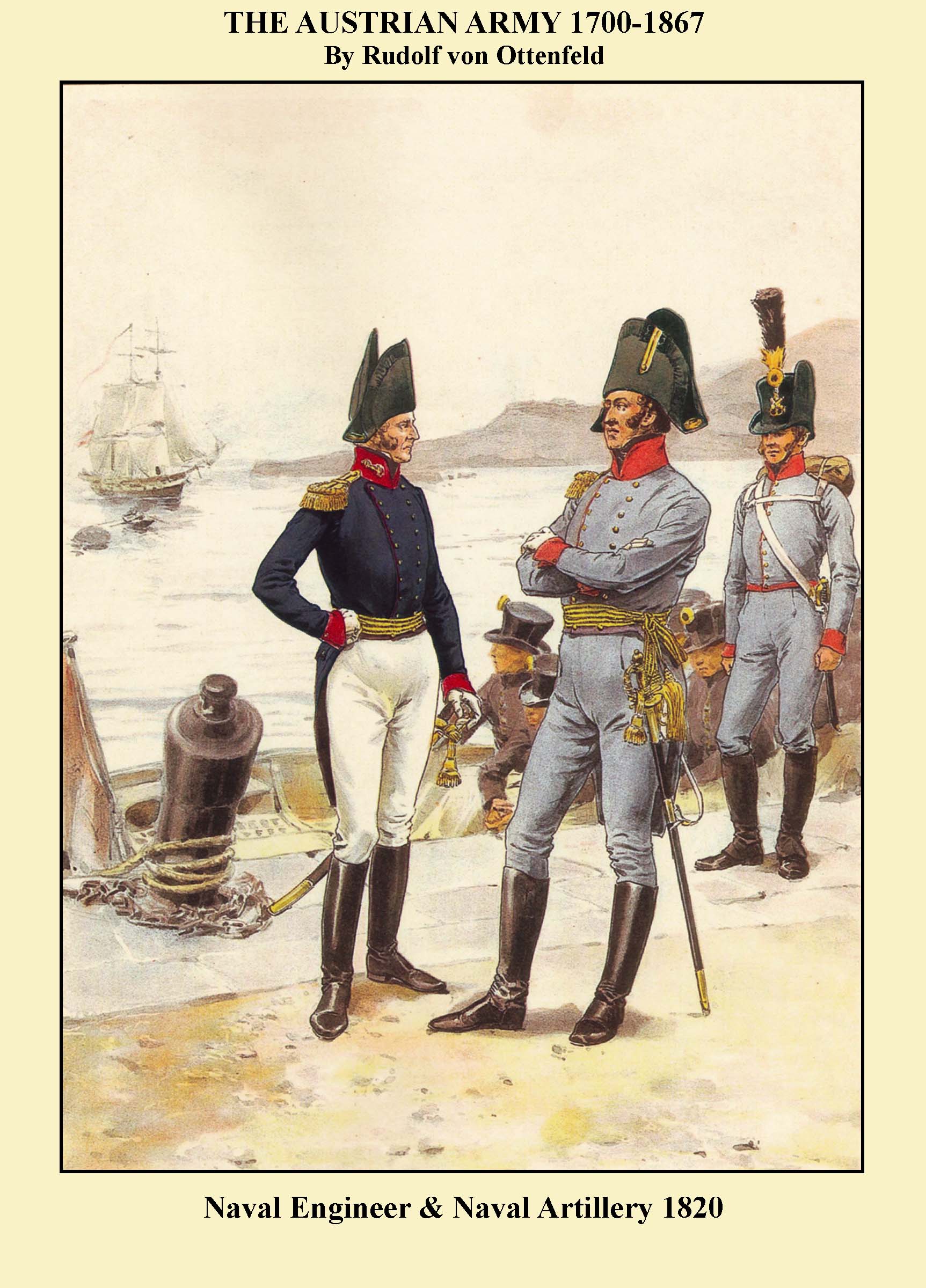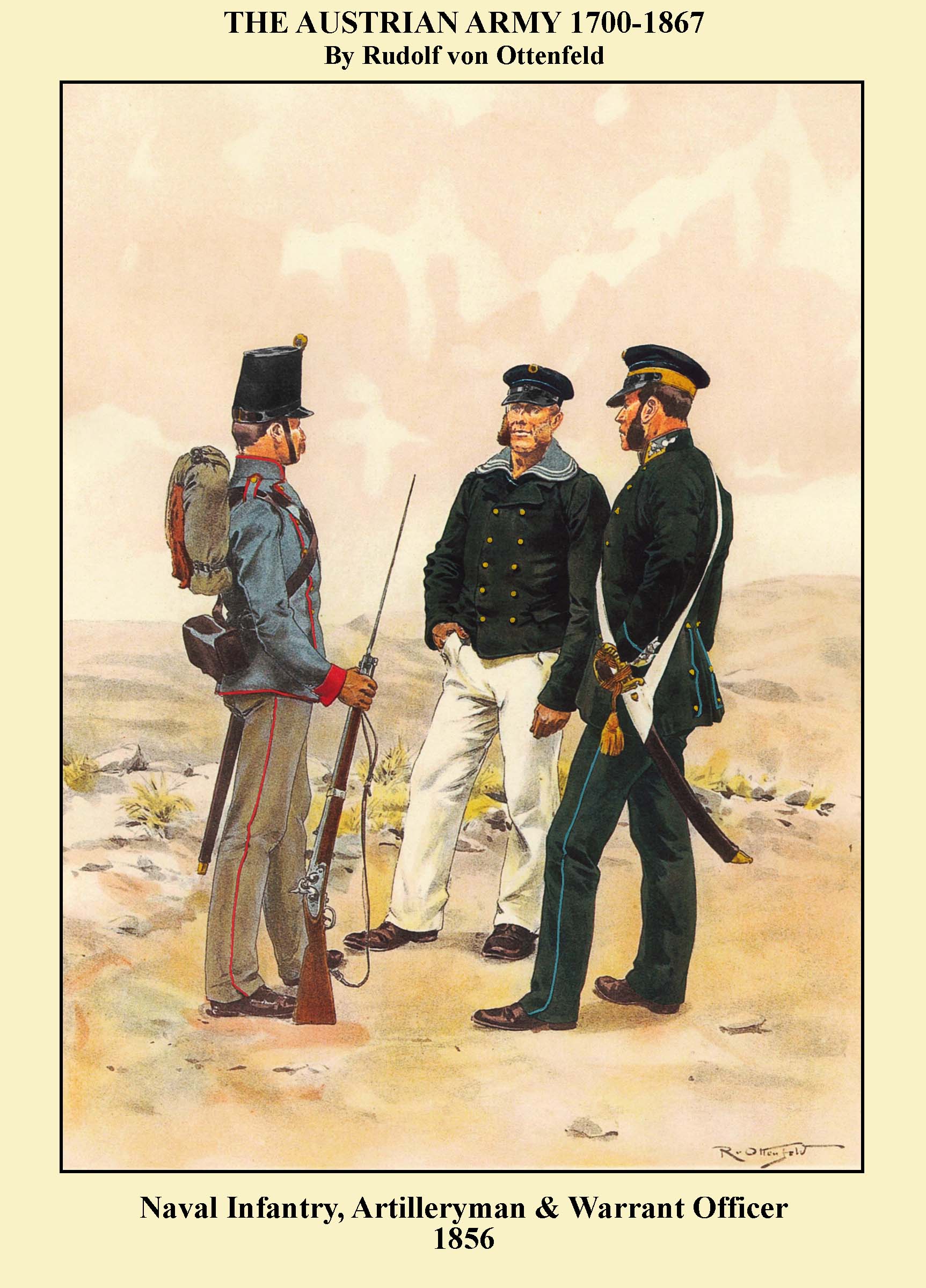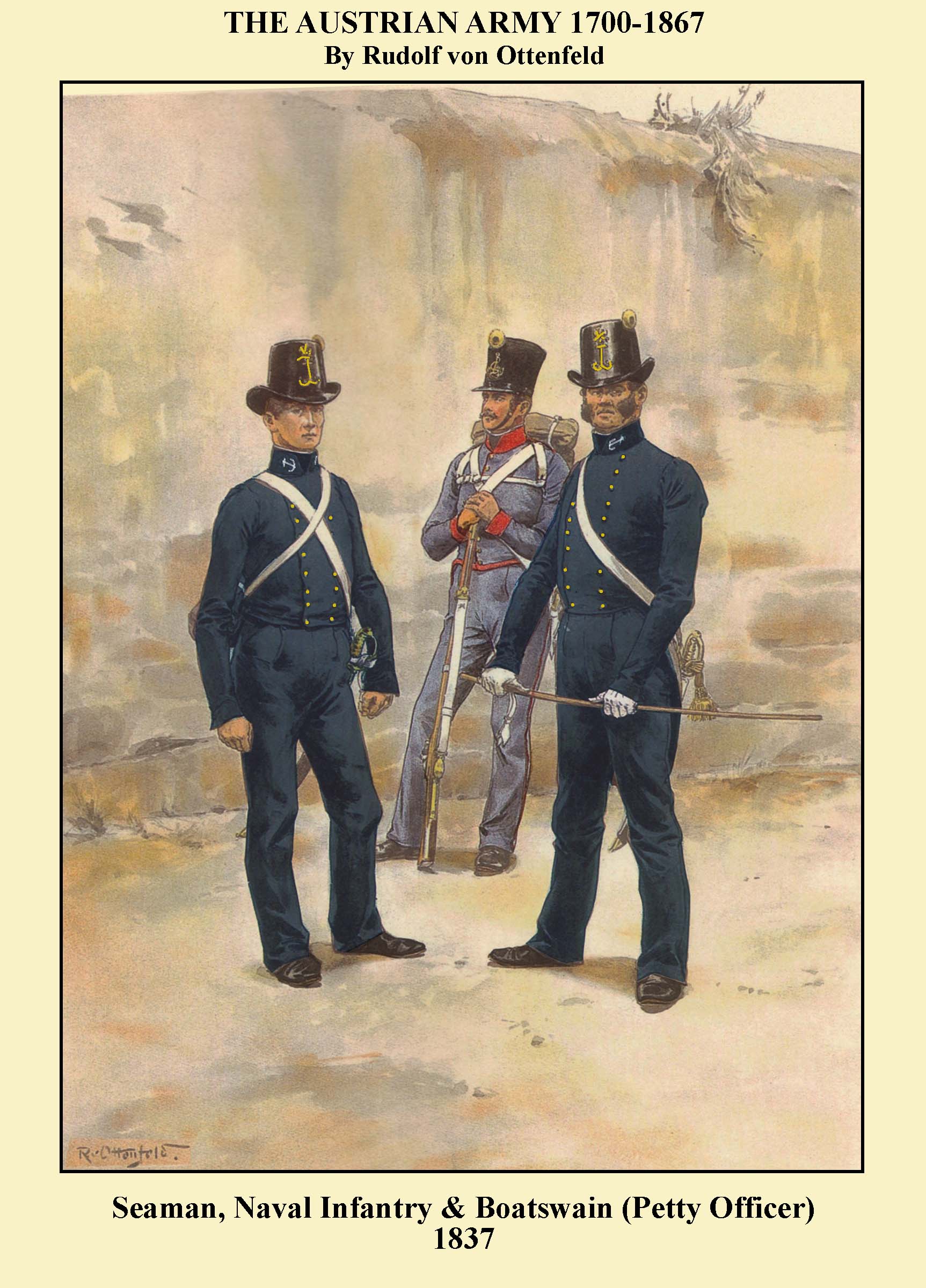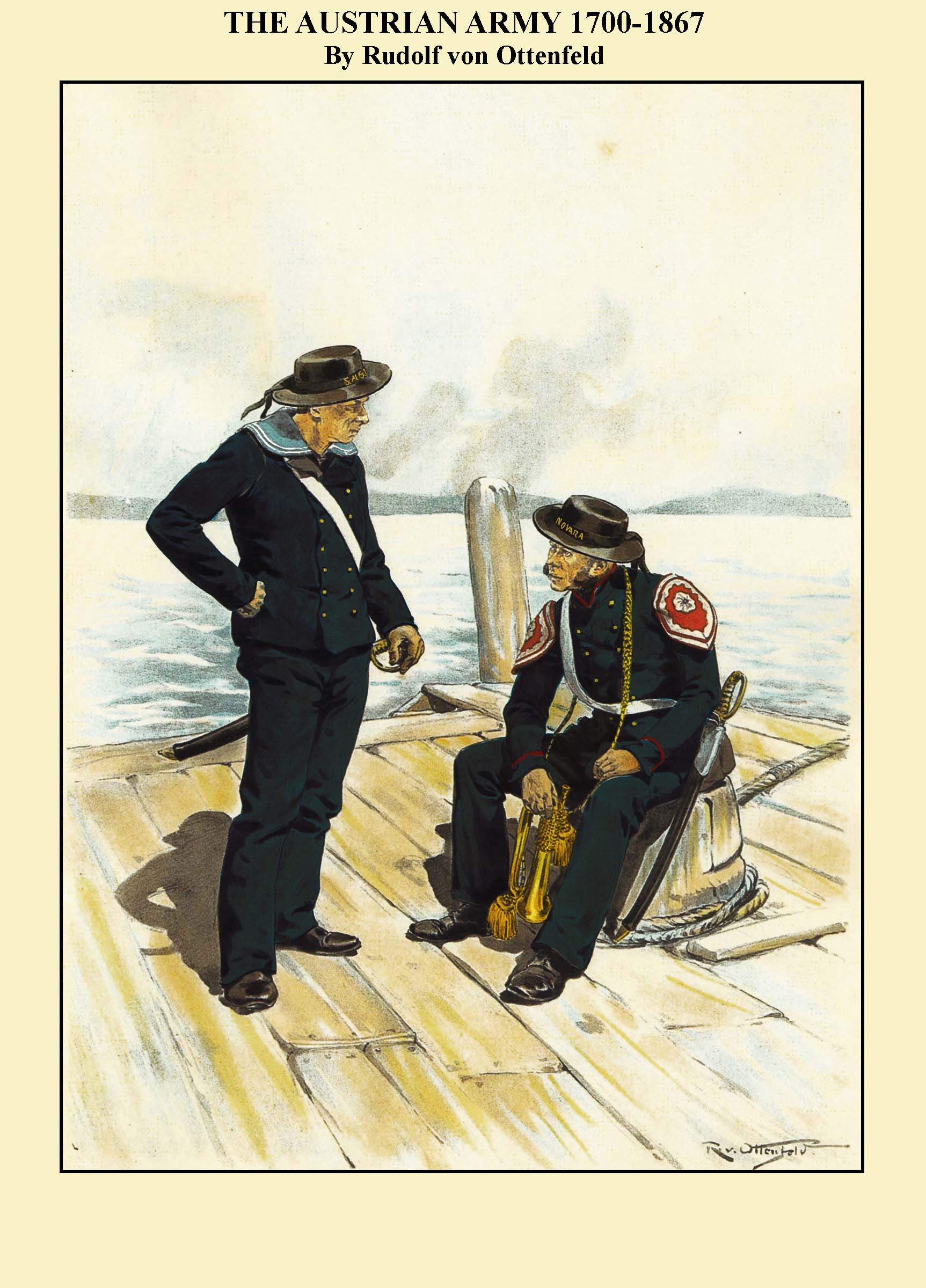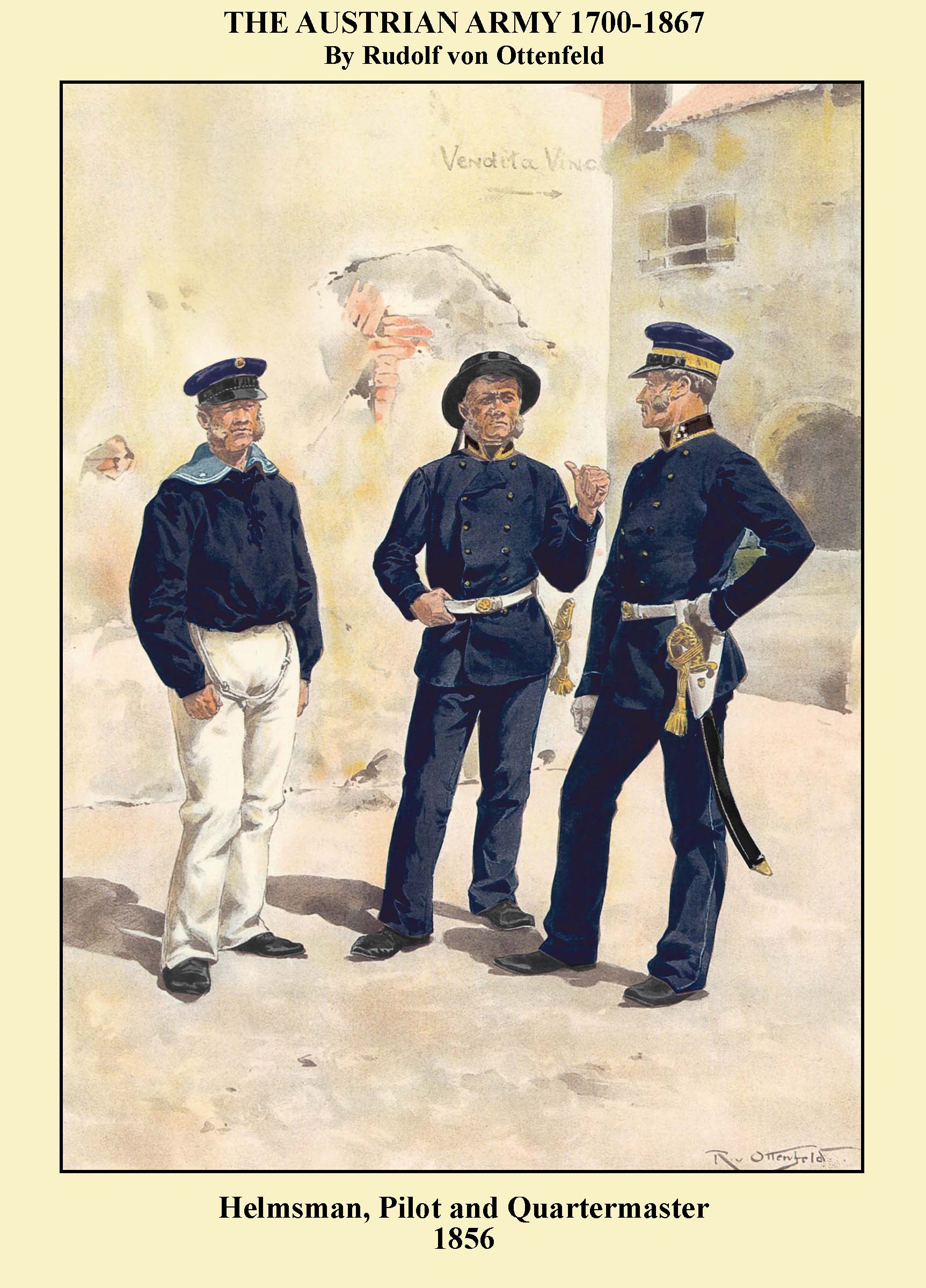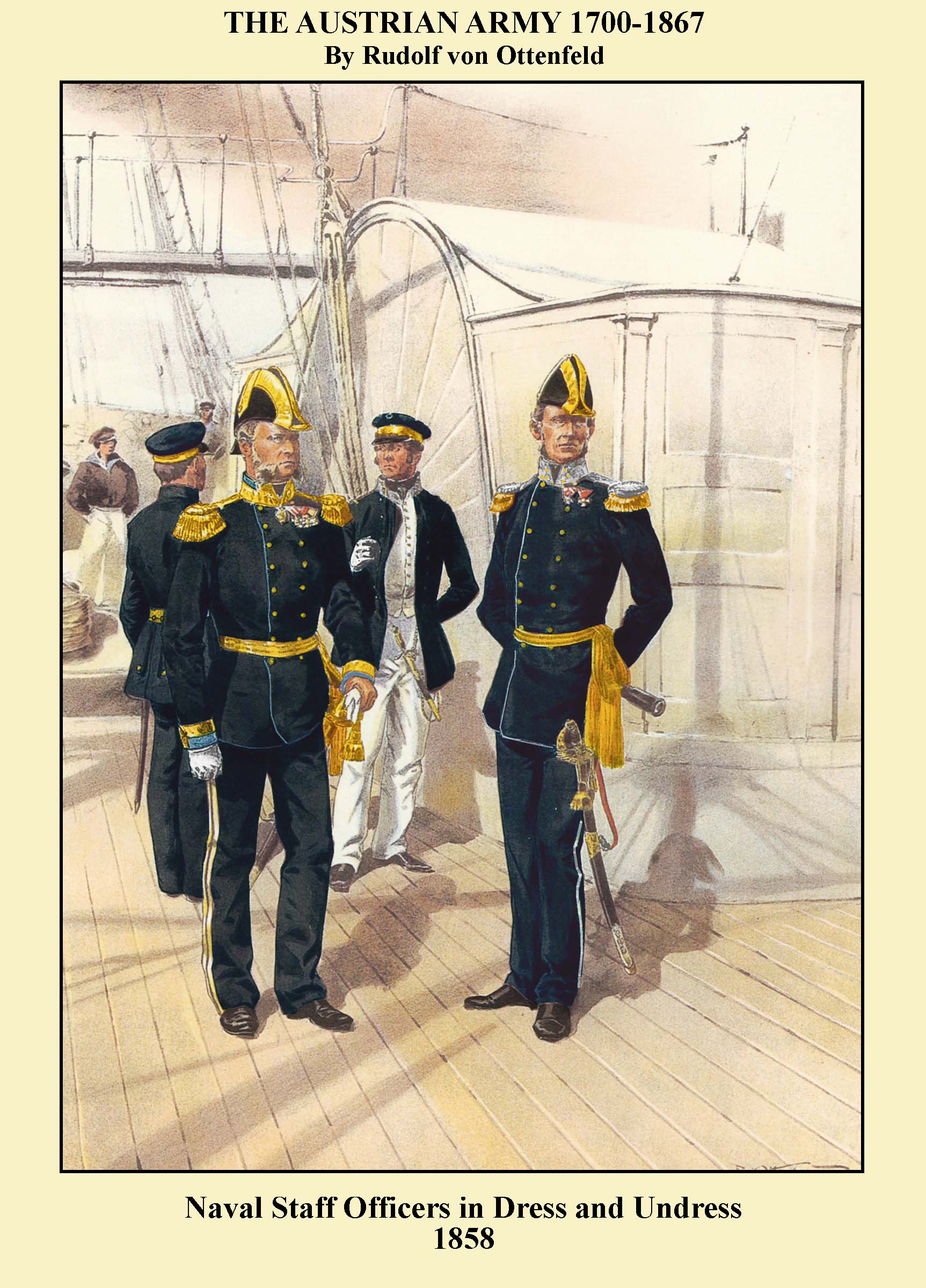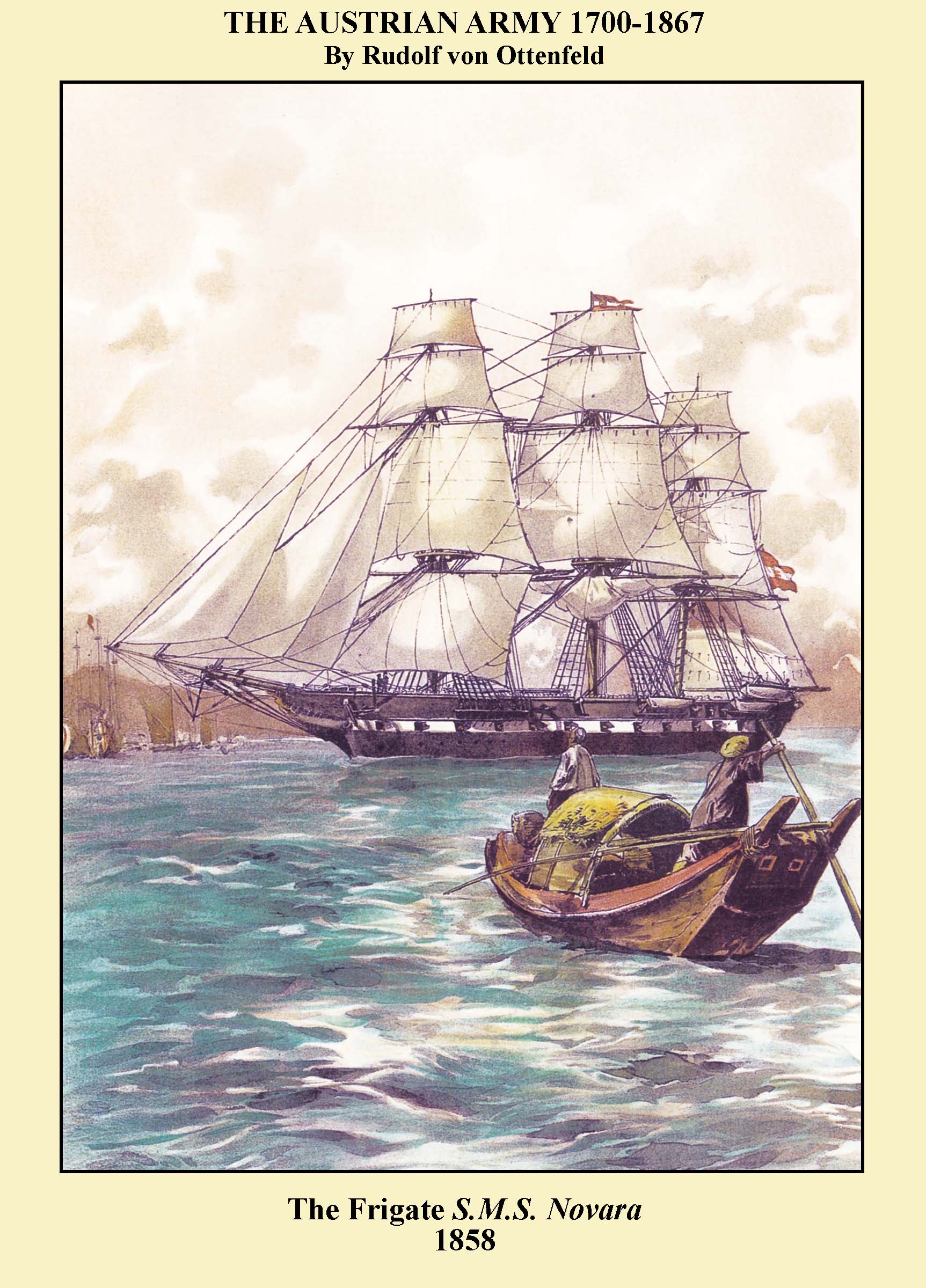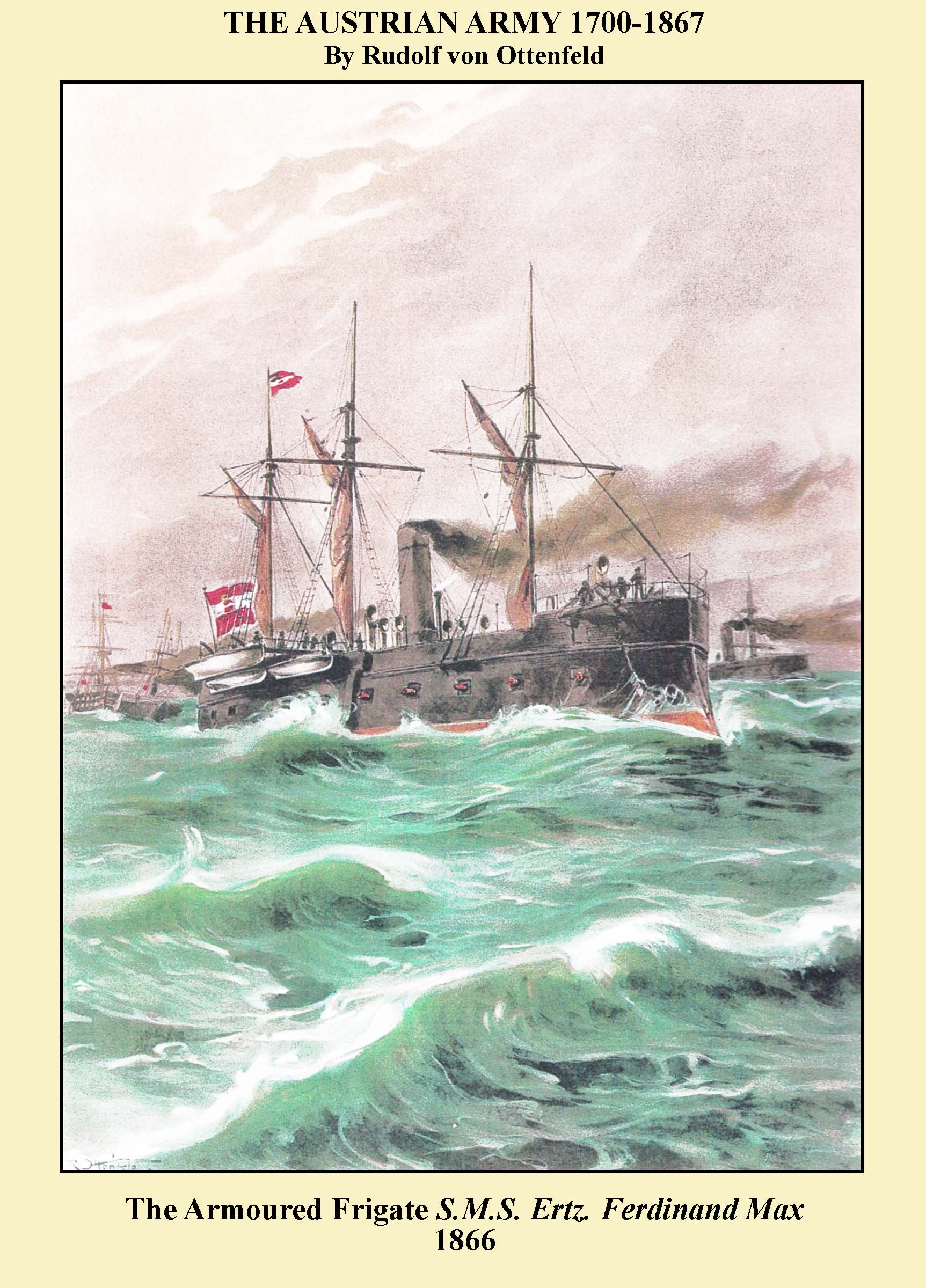THE WORLD OF MILITARY UNIFORMS
1660-1914
THE AUSTRIAN ARMY 1700-1867
By Rudolf Otto von Ottenfeld
Page 7
PART V
THE AUSTRIAN NAVY
1786-1867
The Austrian Navy was formally established in 1786. Prior to that date there had been various maritime entities within the confines of the Hapsburg Empire. With Trieste being the main access to the sea, vessels did sail from there under the Hapsburg flag. After the War of Spanish Succession, there was an Ostend company formed in the newly acquired Austrian Netherlands but its primary mission was trade. In 1775 the Austrian East India Company was raised but its attempts to establish colonies in Africa and elsewhere were frustrated by the larger powers.
The so-called Trieste Navy, formed in 1786 consisted of two 20 gun cutters and was manned by mostly Italian officers and seamen. With the acquisition of Venice the navy grew to some 37 vessels with 111 guns and less than 1000 men. Austria lost its coastline in 1809 after the defeat at Wagram and the Establishment of the Kingdom of Italy. By 1815, it had been restored after the Congress of Vienna. This naval force was termed the Austrian-Venetian Navy and existed until 1848. During this period, the navy expanded. A naval cadet school was established and more ships and equipment were acquired. In the 1820s two Frigates sailed from Trieste to Brazil marking the first time an Austrian ship had crossed the Atlantic. The first Steam frigate was launched in 1836.
In 1848 the European Revolutions began and Austria was deeply involved in its suppression. For the Navy, the biggest loss was Venice when the military and naval forces were ejected from the city with Admiral Martini being taken prisoner. The situation was restored after Radetzky’s victory over the Sardinians in 1848 at Custozza and the bombardment of Venice led to its surrender in 1849.
From 1850 the Austrian Navy grew substantially. It was now known as “Kreigs-Marine” … a true Austrian Navy. Also, the Italian element of the navy was gradually replaced by other nationalities of the Empire including Croats, Dalmatians and Hungarians. At this time the navy consisted of 4 x 32-42 gun frigates, 6 x 20 gun corvettes, 7 x 16 gun Brigs, 10 miscellaneous sailing ships & 4 steamers. In 1854, the command of the Austrian Navy fell to Emperor Franz-Josephs younger brother, Archduke Ferdinand Max. From this time the navy expanded and improved dramatically with the acquisition of Ironclads and other vessels.
The loss of most of its Italian possessions in the 1859 2nd War of Italian Independence did not halt the Navy’s progress. There became a minor arms race with the newly independent Italy with the acquisition of more ships, some even built on Austrian soil at Pola. The first Austrian ship to circumnavigate the globe was the SMS Novara.
The Austrian Navy acquitted itself well during the 2nd Schleswig War of 1864 despite the action off Heligoland with the Danish Navy which resulted in a stalemate.
Whereas the Austrian Army saw defeat on almost every front during the Austro-Prussian War, it was more successful in Italy. On the naval front the Austrian Fleet under Admiral Tegetthoff soundly defeated the Italian fleet off the coast of the Island of Lissa in 1866. It was the first steam and Ironclad sea battles in European history and the first to use the ram as an offensive tactic. In 1869 the Austrian Navy became the Royal and Imperial Navy of Austria-Hungary.
UNIFORMS OF THE AUSTRIAN NAVY
From the beginnings, the Austrian Navy were dressed similarly to most navies of the world. Dark blue coats, white breeches and black felt hats were worn. At some point, officers added light blue collars and cuffs which remained a feature until 1865. Sailors wore the usual working clothes that were worn around Europe. In 1815, seamen were wearing the round jacket and Corsican hats with white or ticken trousers. In 1820, officers adopted bicorne hats. By 1835 blue trousers were being worn with gold stripes. The double breasted tunic was introduced for officers around 1856 and distinctions between branches of officers were authorised. While sea officers continued to have light blue facings, the civil branches wore white with silver lace.
By 1856 the Austrian seaman were wearing oilskin brimmed hats (somewhat like the British Royal Navy) with the name of the vessel in gold letters on a black band. Dark blue round jackets with brass buttons with light blue collar flaps that had white edging and was worn over the jacket. For sea duty, sailors wore blue blouses with the light blue flap. Warrant Officers and Petty officers wore peaked round caps similar to officers with, the former with gold bands and the latter with black. Musicians and buglers had red piping on their jackets and scarlet shoulder boards with white edging and central rosette.
NAVAL INFANTRY
The Naval Infantry were formed in 1800 and wore pike grey uniforms with red facings. The headdress was the same as for the army infantry beginning with the crested helmet replaced in 1809 with the shako modified in 1817. The uniform remained pike grey in infantry style until 1854 when trousers were changed to mid grey with a red stripe. In 1860 uniforms became dark blue with scarlet piping with scarlet shoulder pads and continuing with the infantry shako with anchor badge. In 1864, they copied the infantry with single breasted tunics and stand and fall collars.
NAVAL ARTILLERY
The Artillery at first wore the same uniform as the Naval Infantry with Corsican Hats instead of the shako. By 1856, it was essentially a branch of the Navy itself wearing naval uniform with red pipings.
COMING NEXT:
Uniform Items, Weapons &
Armaments.


